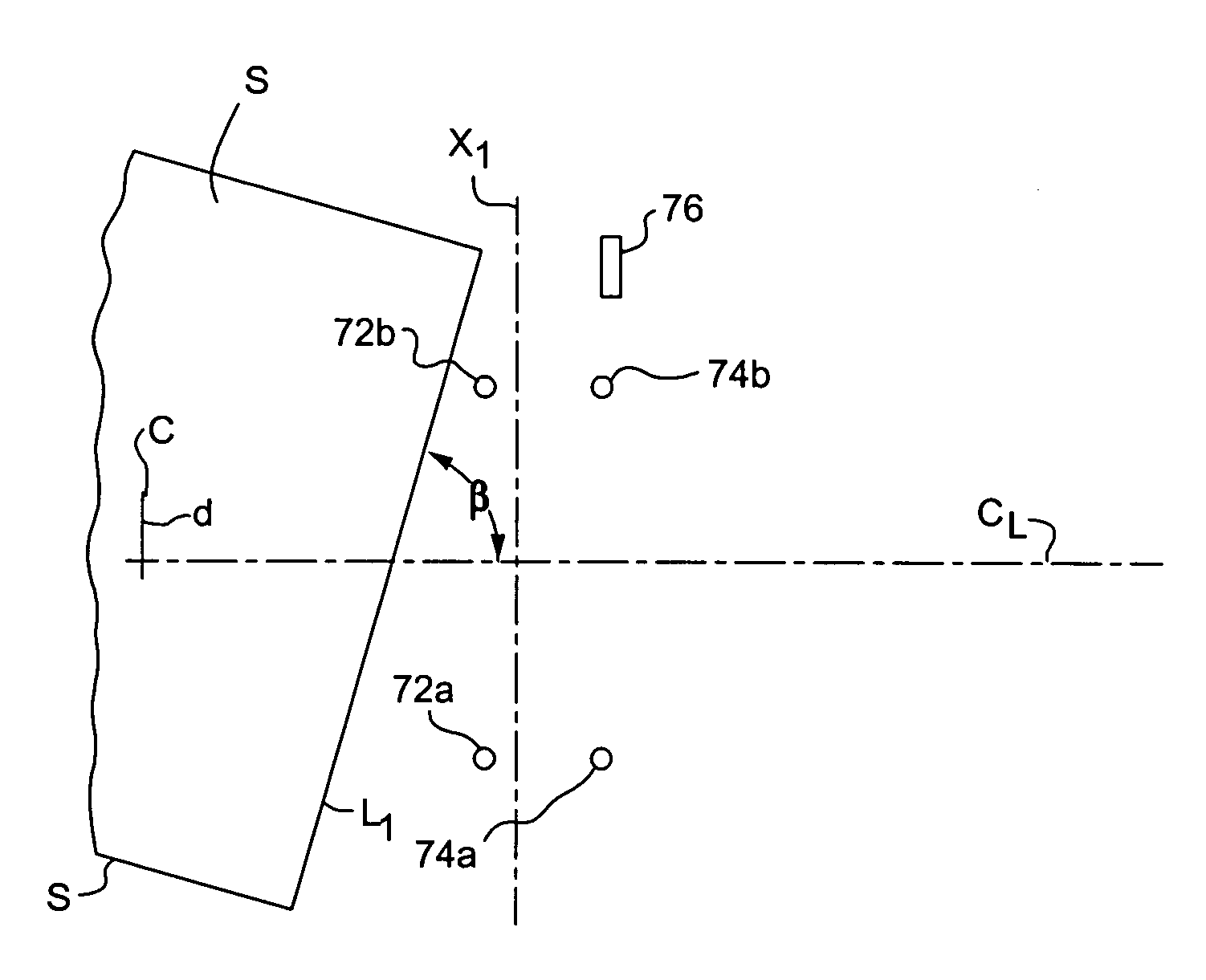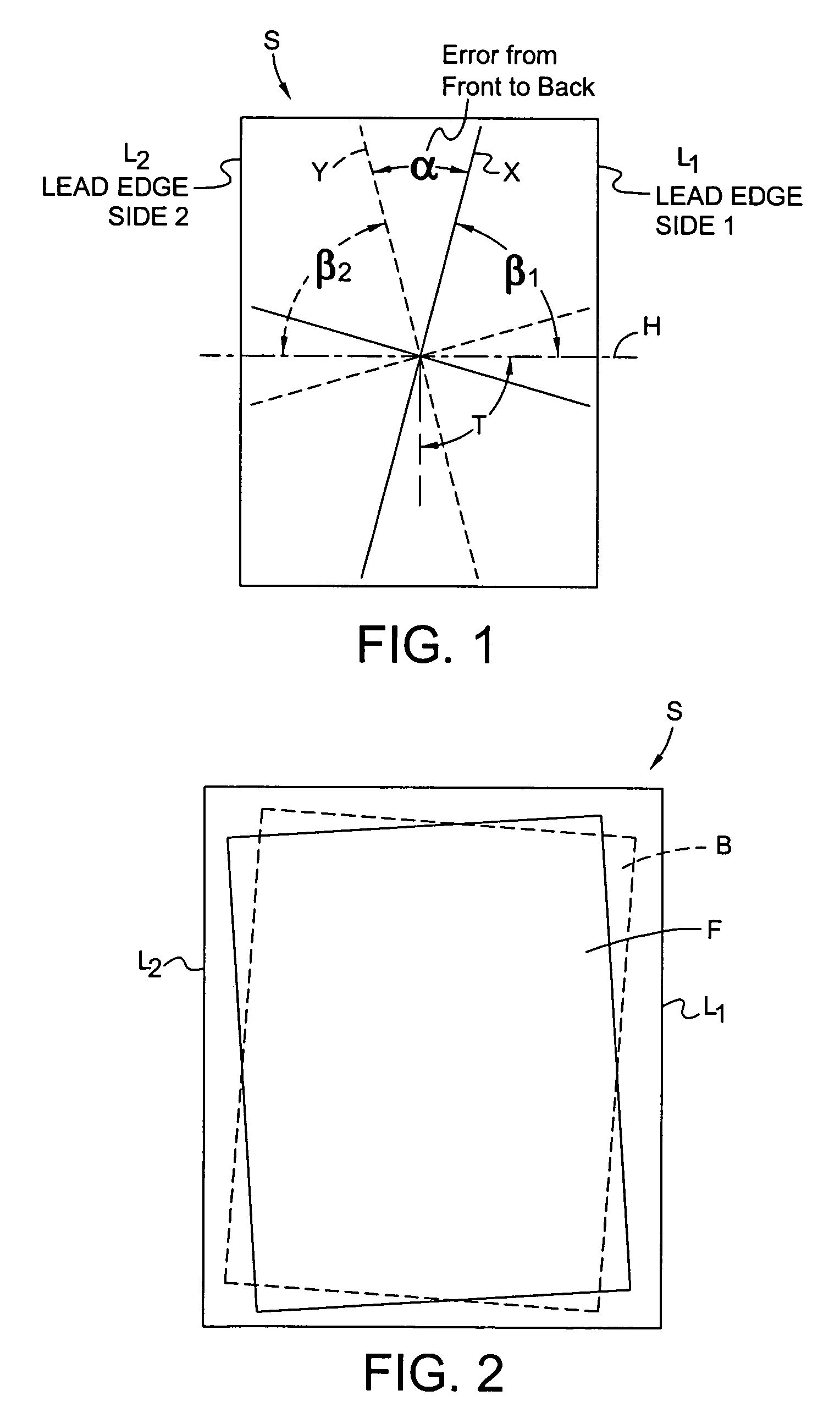Method for registering sheets in a duplex reproduction machine for alleviating skew
a duplex reproduction machine and registration method technology, applied in electrographic processes, instruments, transportation and packaging, etc., can solve the problems of increasing the price, affecting the esthetic quality of the copy, and affecting the use of the copy, so as to reduce the cost of the duplex reproduction machine and reduce the skew from front to back
- Summary
- Abstract
- Description
- Claims
- Application Information
AI Technical Summary
Benefits of technology
Problems solved by technology
Method used
Image
Examples
Embodiment Construction
[0024]Referring now to the drawings, FIG. 1 is representative of a sheet S of copy medium (e.g. paper) which, in turn, is to be used in a duplex copier / printer or the like (hereinafter collectively referred to as “copier”) wherein an image is to be transferred from a photoconductor member (e.g. film) onto both the front and the back of the sheet. As will be understood in the art, it is important in quality copying / printing operations that the profiles (i.e. boundaries) of the front and back images F, B (FIG. 2) be in substantial alignment to prevent an undesirable appearance when sheet 10 is viewed from either side. That is, if the image F (solid lines) on the front side of sheet S is misaligned (i.e. skewed) with relation to image B (dotted lines) on the back of sheet S, then as illustrated in FIG. 2, a phantom image (i.e. dotted lines B) will be faintly visible from the front side, and vice versa, which can be distracting to a viewer (e.g. reader) when viewing sheet S.
[0025]Typica...
PUM
| Property | Measurement | Unit |
|---|---|---|
| angle | aaaaa | aaaaa |
| error angle | aaaaa | aaaaa |
| skew angles | aaaaa | aaaaa |
Abstract
Description
Claims
Application Information
 Login to View More
Login to View More - R&D
- Intellectual Property
- Life Sciences
- Materials
- Tech Scout
- Unparalleled Data Quality
- Higher Quality Content
- 60% Fewer Hallucinations
Browse by: Latest US Patents, China's latest patents, Technical Efficacy Thesaurus, Application Domain, Technology Topic, Popular Technical Reports.
© 2025 PatSnap. All rights reserved.Legal|Privacy policy|Modern Slavery Act Transparency Statement|Sitemap|About US| Contact US: help@patsnap.com



